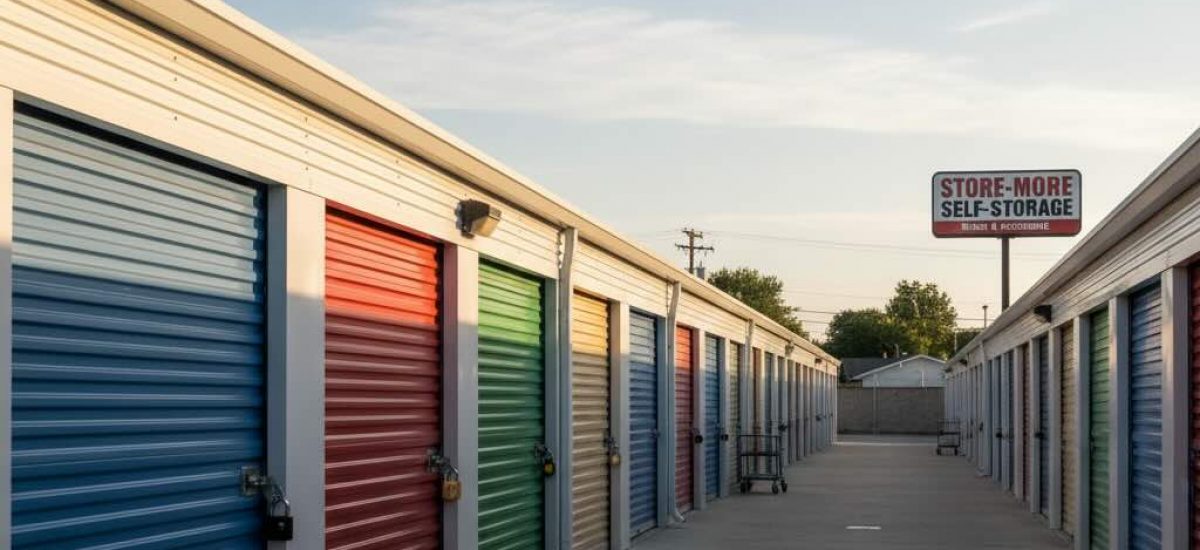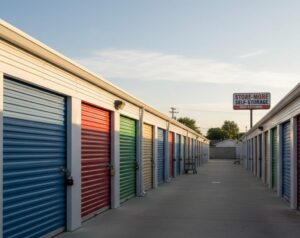Many storage facilities ask for “proof of coverage – self storage insurance” before they hand over a lock and gate code. Some renters already have protection through a homeowners or renters policy; others are offered a facility plan at the counter. This guide explains what storage insurance is, how it differs from a “tenant protection plan,” what your home or renters policy may already cover, and when a separate policy tends to make sense.
Knowing the costs, such as how much are storage units in 2025, is just one part of the budget; understanding how to protect your items is another.
Key Points
- Many homeowners and renters policies include off-premises coverage for belongings stored away from home, often with limits or sub-limits; common exclusions include flood, earthquakes, mold, vermin, and poor maintenance.
- Facilities sometimes sell a tenant insurance policy underwritten by an insurer, and sometimes a tenant protection plan that is a contract with the facility, not an insurance policy. They are not the same product.
- Off-premises limits on home or renters policies can be modest (often about 10% of your personal property limit), which may be fine for basic contents and too light for higher-value storage.
- Flood is typically excluded on both home and renters insurance; covering contents in a storage unit for flood requires a separate flood policy.
Do You Need to Buy Separate Storage Insurance?
The answer hinges on what you’re storing, how much it’s worth, and the risks you want to transfer. If your homeowners or renters policy already provides enough off-premises protection for the value inside the unit; and the exclusions fit your situation an extra policy may be unnecessary. If the off-premises limit is small relative to what you plan to store, or if you want features such as replacement-cost settlement specific to stored items, a dedicated storage policy can fill that gap.
Some facilities require proof of insurance; in those cases you can show your existing policy or purchase coverage through the storage operator or an insurer of your choice.
What’s Typically Covered and What Isn’t
| Risk / Scenario | Often Covered | Commonly Excluded or Limited | Where to Confirm |
|---|---|---|---|
| Fire, smoke, theft, wind | Usually covered under home/renters off-premises coverage and many storage policies (named perils vary). | Security-device requirements, deductible, proof of forcible entry. | Your policy declarations and the storage policy wording. |
| Water from flood/surge | Not covered by standard home/renters; requires separate flood insurance for contents. | Flood almost always excluded unless a flood policy is in place. | NFIP or private flood policy summary. |
| Mold, mildew, vermin | Frequently excluded on home/renters and many storage policies. | Exclusion language is common; climate-controlled units help conditions but do not change coverage. | III overview and policy exclusions. |
| Breakage/fragile items | Sometimes excluded unless due to a covered peril. | Self-caused damage and gradual deterioration typically excluded. | Individual policy terms. |
| High-value categories (jewelry, art) | Subject to special sub-limits; often need a scheduled endorsement. | Low sub-limits off-premises; some items excluded entirely. | Your insurer’s valuables schedule rules; NAIC renter/home guidance. |
Home/Renters Policy vs. Self Storage Insurance vs. Protection Plan
Before you even decide, it’s important to understand the various forms of storage, whether it’s a traditional unit or you are investigating how does storage in a container work. The type of storage may influence your insurance needs, particularly regarding access and movement.
| Option | What It Is | Strengths | Watch-outs |
|---|---|---|---|
| Homeowners / Renters (off-premises) | Your existing policy extends to belongings away from home, often with a percent cap. | One deductible, familiar claims process. | Off-premises limits (often ~10% of personal property limit); flood, mold, vermin exclusions. |
| Storage “Tenant Insurance” | A regulated insurance policy (facility-offered or independent) covering contents in storage. | Can tailor limits to stored value; proof of insurance for facility requirements. | Policy terms vary; confirm perils and settlement basis (actual cash value vs. replacement cost). |
| Tenant Protection Plan | A contract with the facility, not an insurance policy. | May satisfy the lease requirement at that facility. | Different legal footing than insurance; benefits and exclusions are facility-specific. |
How to Decide If You Need To Purchase One
When deciding, you should consider the volume of your items, such as if you are maximizing your 5×10 storage unit, as this dictates the total value you need to protect.
- Short, low-value storage: Boxes of decor and sports gear with modest total value often fit within a renters policy’s off-premises limit; some readers are comfortable relying on that and documenting the contents.
- Higher-value storage: Furniture sets, instruments, or collections can exceed off-premises limits; this is where a storage policy with a higher limit (and, ideally, replacement-cost settlement) becomes attractive.
- Flood-prone location: Units near coasts or rivers bring a specific water risk that standard policies exclude; only a flood policy covers contents for that peril.
- Facility requirement: Some leases require proof of coverage; showing your existing policy works if limits satisfy the lease, otherwise the facility’s insurance or a third-party policy can meet the requirement.
Common Mistakes and Softer Alternatives
- Assuming the facility’s insurance covers your items. The building’s policy usually protects the premises, not your contents; contents coverage is your policy’s job.
- Overlooking off-premises limits. A 10% cap on personal property can surprise people; checking that number against what’s stored keeps expectations realistic.
- Confusing “protection plans” with insurance. Protection plans are contracts with the facility and live under different rules than regulated insurance.
- Forgetting flood. Standard policies exclude it; contents need a flood policy to be covered for rising water.
FAQ
Is self storage insurance required?
State law does not generally require it, but many facilities do as a condition of the lease. You can satisfy the requirement with your own home/renters policy (if limits fit) or by buying a storage policy through the facility or an independent insurer.
How do I know if my renters/home policy is enough?
Look for the off-premises personal property limit and the list of excluded perils. If the limit comfortably covers what you are storing—and the exclusions align with your risk tolerance; separate storage insurance may be unnecessary.
Does self storage insurance cover floods?
Not typically. Flood is a separate policy. NFIP and some private carriers offer contents-only flood coverage.
What about items like jewelry, art, or collectibles?
These categories often have low sub-limits off-premises and may require a scheduled endorsement even at home. Ask your insurer how these items are treated before placing them in storage.
References
- Insurance Information Institute – Self-storage facility coverage & tips.
- NAIC – Renters insurance: protecting your belongings.
- FEMA / FloodSmart – Buying flood insurance (contents coverage).
- Insurance Information Institute – Storage unit insurance briefing (off-premises limits).
- Allstate – Insurance for contents in a storage unit (example off-premises cap).
- Storelocal – Tenant protection vs. tenant insurance (program differences).
Coverage terms, sub-limits, and exclusions vary by insurer and facility. Where ranges appear, treat them as planning guides and confirm details with your policy documents.








